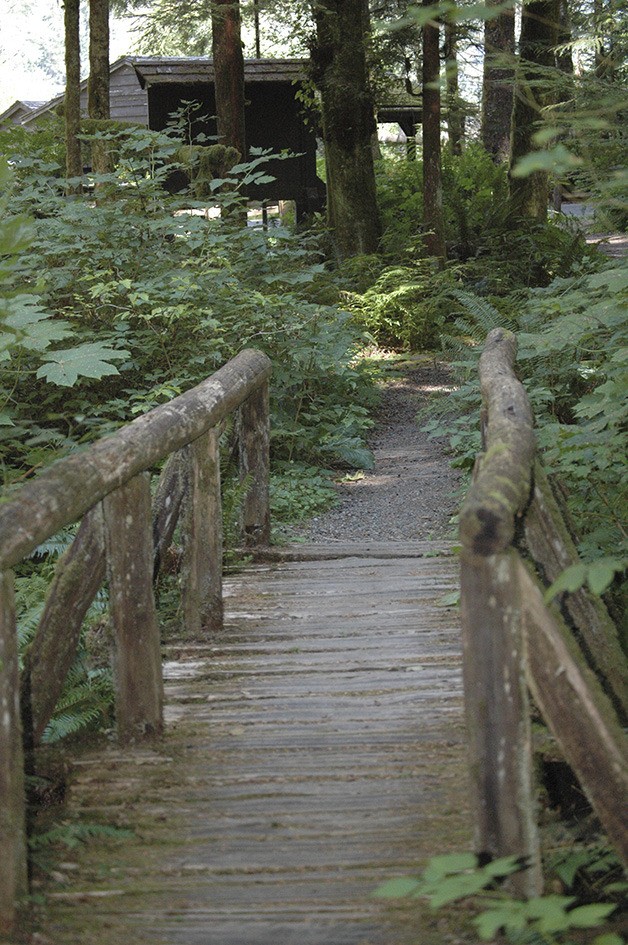It’s certainly no secret that when Mother Nature compiled her personal “Best Of” list, she was staring straight into the heart of Mount Rainier.
Our little corner of the universe is blessed to be within easy driving distance of soaring peaks, a wondrous series of trails, cascading waterfalls, magnificent fields of wildflowers, pristine lakes and crystal clear rivers and streams.
Those charged with managing Mount Rainier National Park care for five developed areas within the Pacific Northwest treasure than encompasses 368 square miles. There’s the hugely-popular Longmire and Paradise areas, where most visitors enter; further east is Ohanapecosh; not far from Enumclaw, just a gorgeous drive up state Route 410, is Sunrise; and, last but certainly not least, is the Carbon/Mowich area.
Well, it is “least,” in terms of visitors. Fewer park visitors pass through the Carbon River ranger station than other park entrances. But this particular part of the park refuses to take a back seat to any area when it comes to jaw-dropping, awe-inspiring scenery.
And best of all, for residents of the Plateau and neighboring turf, it’s in their back yard.
Getting there requires only a simple trip to Buckley, through Wilkeson, past Carbonado and over the historic, one-lane Fairfax Bridge. Then, a decision must soon be made: stay left and head toward the ranger station or split off to the right and climb to Mowich Lake.
This latter option isn’t for the faint of heart or the vehicular impaired, as a couple of minutes of smooth sailing is soon replaced by 14 miles of rim-rattling gravel road.
On a recent Thursday afternoon, the bumpy, bouncy journey to 4,900 feet was largely a lonely one. But the end or the road brought a surprise: a parking lot jammed with pickups, SUVs and a larger-than-expected selection of sedans.
This is where the glorious notion of “best of” best applies. To those who would rather breath clean, mountain air than stare into the face of any electronic device, this is a “best of” experience.
Mowich Lake is clean, clear and icy cold, fed by a glacier that clings to the mountain, astoundingly close. A handful of trails offer hiking opportunities for all fitness levels, from those who need hours to cover a couple of well-maintained miles to those who challenge mountain goats when it comes to sure-footed scrambling ability and endurance.
The truly ambitious outdoor enthusiasts plant a tent in one of the campground’s 10 groomed sites where no fires are allowed but the vault toilets are clean.
Here are a few hiking opportunities, as recommended by the national park’s website:
• Rain Forest Nature Trail (.3 miles): Starting across from the Carbon River Entrance Station, this short loop trail takes visitors through a fine example of a temperate rain forest.
• Chenuis Falls Trail (7.4 miles): 3.5 miles from the Carbon River Entrance, cross the Carbon River on the footlog and follow the forested trail to the falls. Use caution crossing the river. Check to make sure the footlog is not washed out before attempting this hike.
• Green Lake Trail (9.6 miles): Trail begins 3.3 miles east of Carbon River Entrance, along the Carbon River Road. Hike through dense forest to a beautiful mountain lake. Take a short side trip for a view of Ranger Falls.
• Carbon Glacier Trail (17 miles): From the Ipsut Creek Trailhead, hike along the glacier-fed Carbon River to view the terminus of Carbon Glacier. Stay away from the terminus of the glacier! Rocks fall and bounce off the glacier as the ice melts and could cause serious injuries.
• Tolmie Peak Trail (6.5 miles): Beginning from the north side of Mowich Lake, this hike passes the beautiful subalpine Eustice Lake on its way to the Tolmie Peak Lookout.
Note: On Mount Rainier, winter weather can come early and stay late. Some area remain open while others close from early fall until the spring thaw. Some destinations can close in late September. It’s always a good idea to check park conditions before embarking on an adventure.


